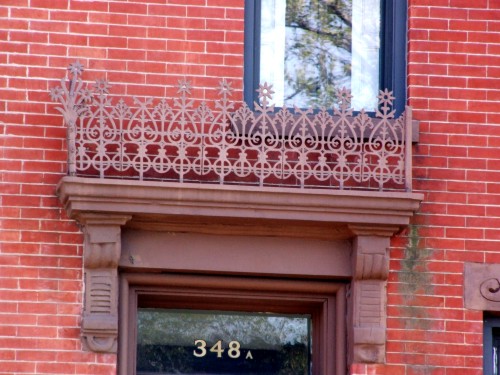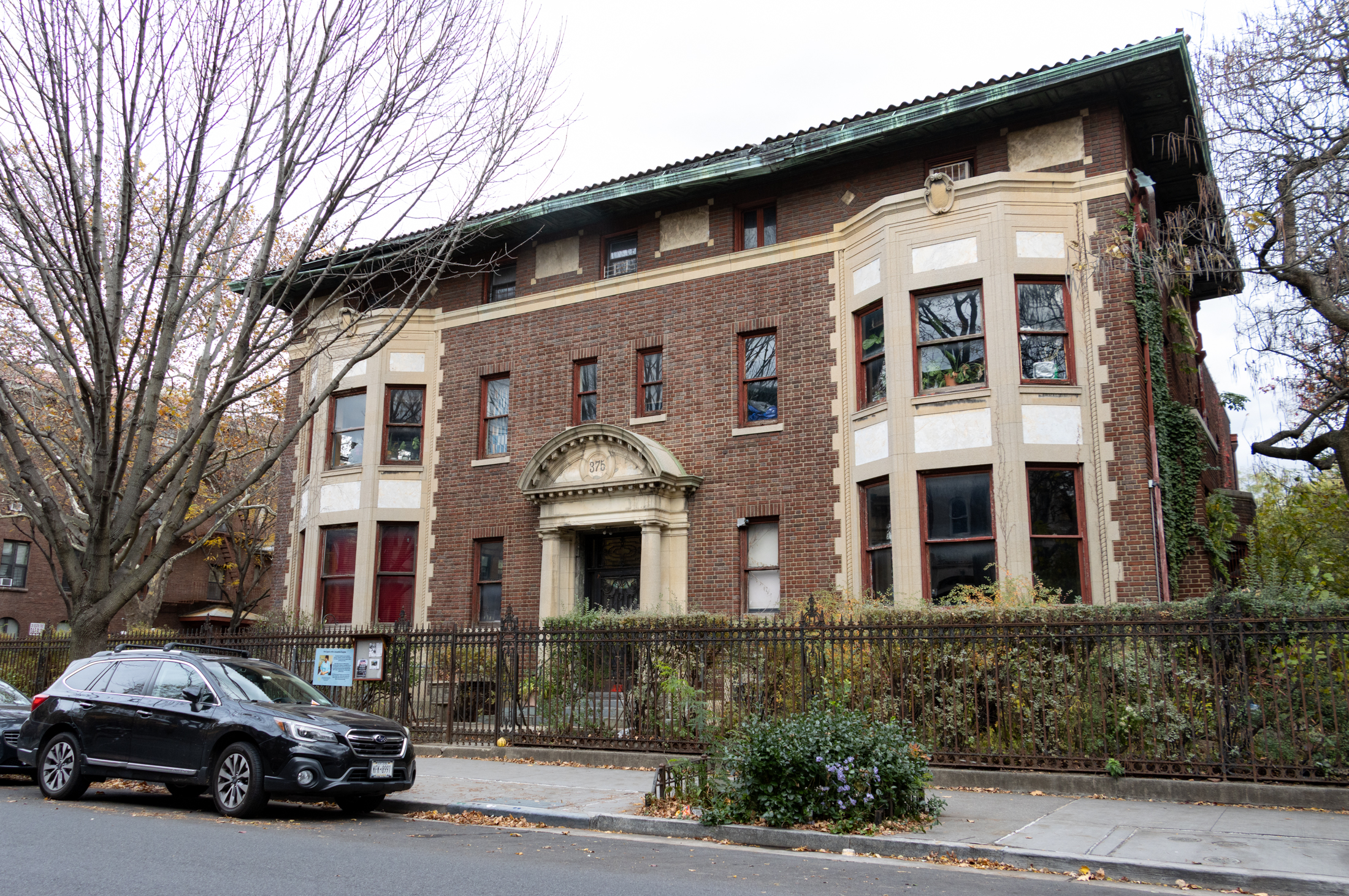Building of the Day: 348-352 Decatur Street
Brooklyn, one building at a time. Name: Row houses Address: 348-352 Decatur Street Cross Streets: Stuyvesant Avenue and Malcolm X Boulevard Neighborhood: Stuyvesant Heights Year Built: 1885 Architectural Style: Neo-Grec, with elements of Queen Anne styling Architect: John S. J. King Other Work by Architect: None discovered as of yet Landmarked: Yes, part of new Stuyvesant…

Brooklyn, one building at a time.
Name: Row houses
Address: 348-352 Decatur Street
Cross Streets: Stuyvesant Avenue and Malcolm X Boulevard
Neighborhood: Stuyvesant Heights
Year Built: 1885
Architectural Style: Neo-Grec, with elements of Queen Anne styling
Architect: John S. J. King
Other Work by Architect: None discovered as of yet
Landmarked: Yes, part of new Stuyvesant Heights Extension HD (2013)
The story: In any discipline there are rules that are expected to be followed in order for a work to meet the criteria of style, convention or even law. My musical education taught me that in Western music, for example, there have been times when certain chords and note progressions were forbidden. The tritone, a diminished fifth or augmented fourth interval, perhaps best illustrated as the first two notes in Leonard Bernstein’s West Side Story song “Maria” – the “Ma-ri” notes, was called “Diabolis in Musica”, the devil in music. Why? It was an uneven and unfinished dissonance that wanted to be resolved. Medieval musicians up through the Baroque period avoided it like plague. It would not be until the Classical period that the interval was freely used, and even then, was most often used to introduce an element of evil or deviltry into a piece. Today, it’s an integral part of jazz, modern classical and popular music. Go figure.
What does that bit of trivia mean to architecture? It’s just an illustration to point out that sometimes, the rules need to be broken, and the result can be delightful. Sometimes the rules are broken by iconoclastic geniuses, but more often than not, they are broken by the small, unnoticed folk who either don’t know better, or don’t care, and don’t have anything to lose. The rules say that rooflines are flat and horizontal across the expanse of buildings. John King said, “Why?”
Like most of the small owners/architect/builders of the period, King bought a few adjoining plots of land and tried to get the biggest bang for his buck in order to make his speculative venture pay off. John King was an Englishman who came to Brooklyn sometime before the Civil War. He was a master builder and carpenter, and spent many years working for others before his chance to develop this property for himself. He bought a lot almost 75 feet wide, and put up five single family houses that are all just inches shy of being 15 feet wide each.
That’s not a lot of space to work with, considering most row houses are at least 18 or 20 feet wide, and King got in two “A” houses in order the keep with the street numbering system. The houses are numbered 348, 348A, 350,350A, and 352. Three of the houses are set back from the street, but the last two are bumped out with bays, to bring them in line with their adjoining neighbor. It’s an unbalanced set of buildings, with the eastern side more prominent than the western side, and the doorways are unevenly clustered to the east, as well.
That imbalance is further enhanced by King’s fanciful use of a trisected roofline. If you look closely, the center third of the roofline is raised, and the sides are lowered; a very late Victorian Queen Anne convention. Because the lowered sides are doubled when two buildings meet, the result is even more visually arresting; a crenellated rhythm of cornices and brackets, punctuated by the addition of modern satellite dishes. Had this group been an architectural project in school, King would not have done well. The group as a whole is unresolved and dissonant. An architectural “Diabolis.” Yet, like the tritone in music, it’s positively magical, creating a rhythmic punctuation on an otherwise ordinary street in eastern Stuyvesant Heights. GMAP







What's Your Take? Leave a Comment